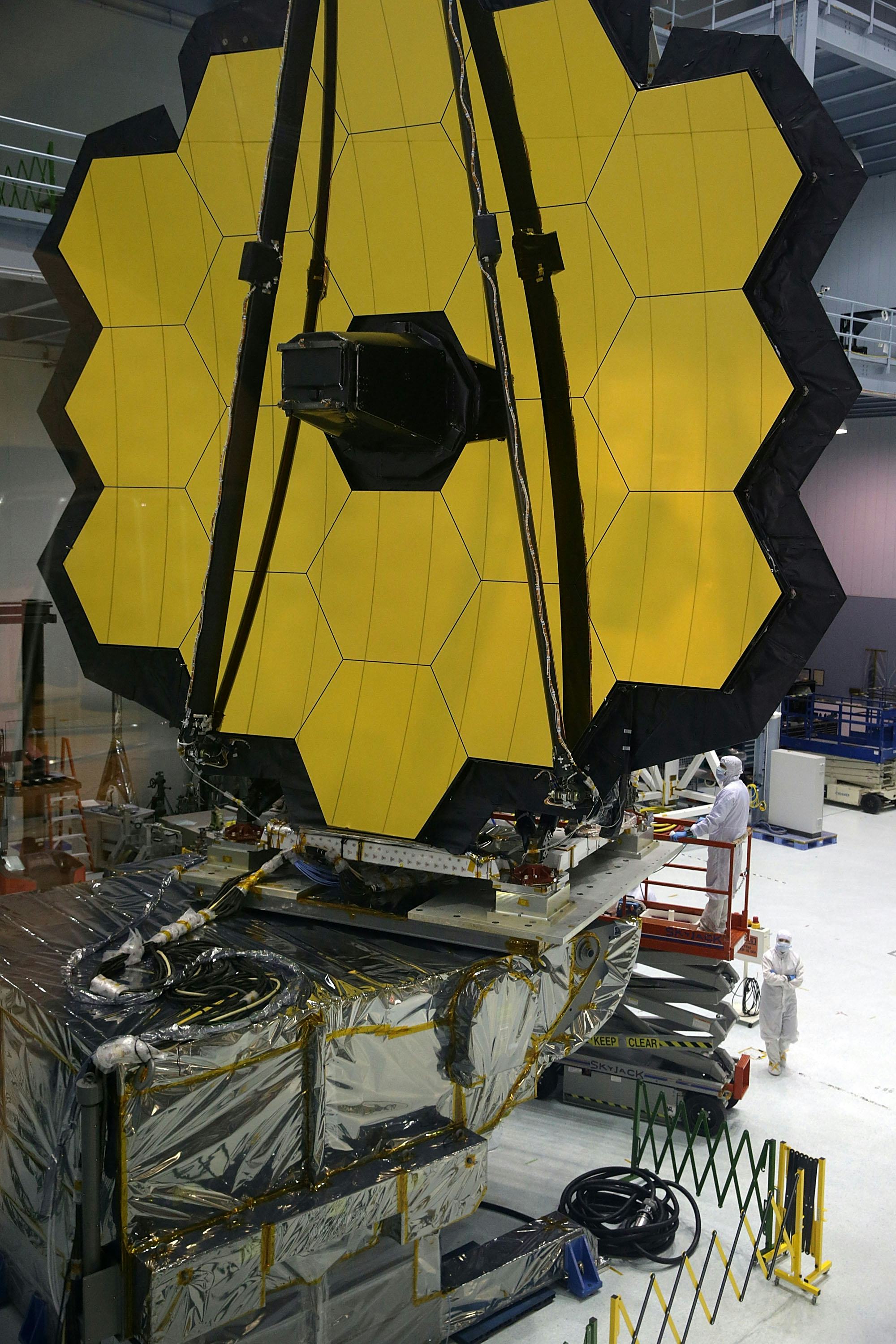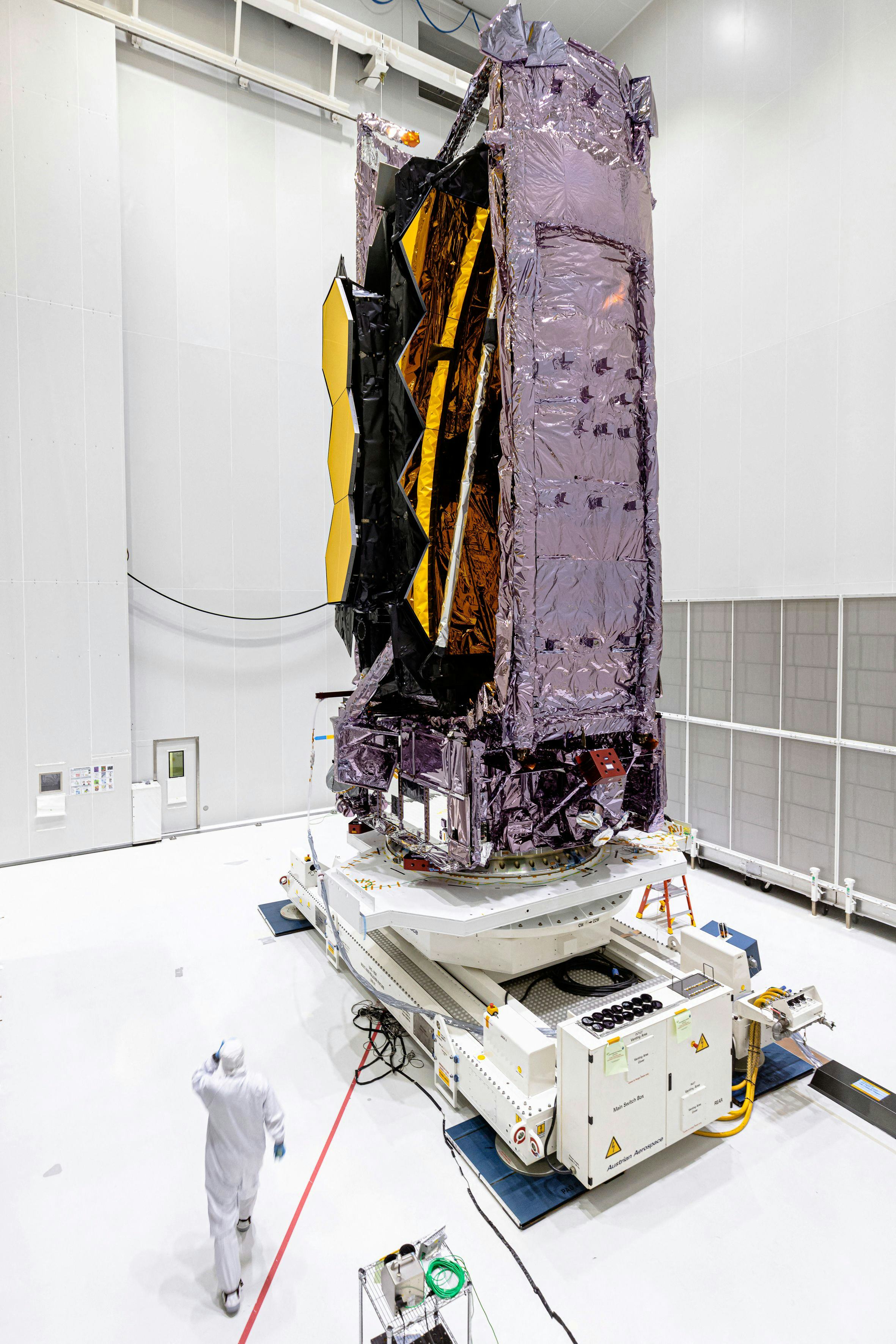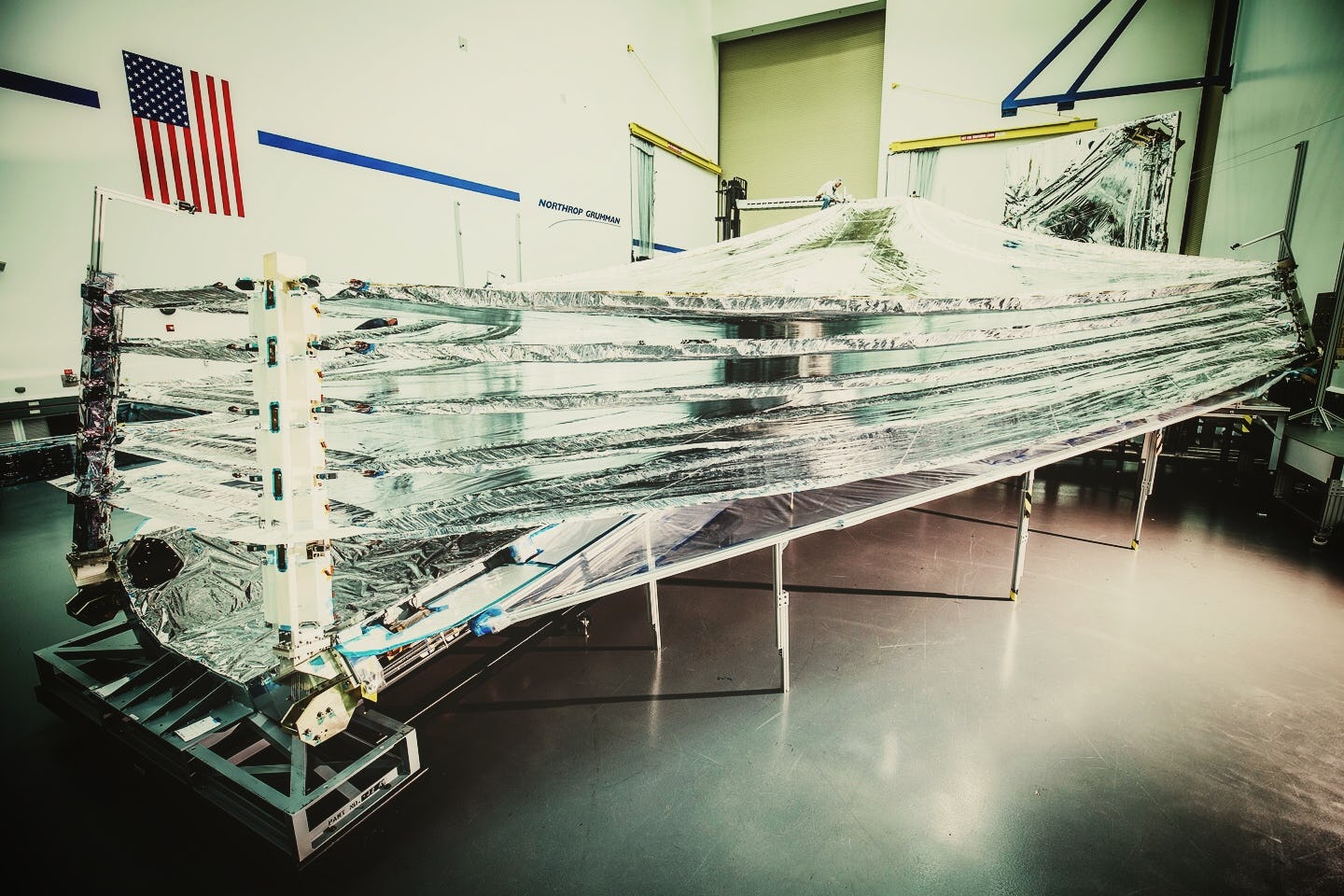
The bumps on the long and winding road keep coming for NASA’s flagship James Webb Space Telescope mission. On November 23, NASA again bumped the launch date for the often delayed, multi-billion-dollar spacecraft and scientific instrument from December 18 until at least December 22 due to concerns over a loose clamp securing the telescope to its Ariane 5 rocket.
But what’s another few days for a project that’s more than 20 years in the making? NASA has already taken every precaution with their new telescope, including secretly shipping it to its launch site in French Guiana via the Panama canal to thwart any attempts at piracy. There’s no reason to rush things now.
Unlike the Hubble telescope, the Webb telescope won’t sit in low Earth orbit. Instead, it will take up a position more than a million miles away at Lagrangian point 2 (L2), a place where Earth’s gravity and the Sun’s gravity cancel out, allowing the Webb to keep Earth constantly at its back as the telescope orbits our star.
NASA designed Webb to see into the deep and ancient reaches of the cosmos in the infrared spectrum, making it essential the Webb telescope be kept cold and out of direct Sun and Moonlight, and L2 is the perfect perch. But flying to L2 also means there’s no hope of a repair crew coming to aid the Webb the way Space Shuttle astronauts famously repaired Hubble’s blurry optics in 1993.
“This telescope is not designed to be a serviceable mission,” Heidi Hammel, an interdisciplinary scientist on the James Webb Space Telescope project, tells Inverse. “So we’re designing it to work, not to send it up and try it.”
NASA’s caution with Webb’s launch stems from all that has to go right for it to work in space. It’s not just the rocket launch, which Hammel admits is always a little nerve-wracking, “We’re putting this precious telescope that we’ve been building for 20 years now on top of a big, giant rocket and lighting the fuse.”
But the anxiety really begins once the Webb reaches space, and begins the complicated dance of activations and deployments necessary for its success. Much of it depends on some alarmingly analog bits of technology. And even once at L2, the telescope will face weeks of calibration before scientists can rest easy, roll up their sleeves, and get to the work of any actual science.
Whenever it occurs, Webb’s launch is just the end of the very long first episode. There’s an even more prolonged saga ahead — and Hammel and other scientists and engineers like her will be hanging on every beat.
What is the James Webb Space Telescope telescope?
The Hubble and Webb telescopes are both Cassegrain reflector-type telescopes. They use a primary mirror to collect light and focus it on a secondary mirror, focusing that light on instruments to create an image.
The bigger the primary mirror, the more powerful the telescope: One reason scientists are excited about the Webb is that its primary mirror is 21-feet in diameter, compared to Hubble’s seven feet.
But 21 feet is too wide to fit inside the fairing, or nose cone, of a rocket. So the Webb primary mirror is built of 18 segments, each of which can be individually adjusted, and which are divided into two foldable wings and a central section to make for a compact launch configuration.

Webb also utilizes a multi-layered, mylar-like sunshade to keep sunlight from blinding its sensitive instruments. The tennis court-size sunshade assembly also rolls up and folds for launch — but must unfold in just the right manner once the telescope is aloft. Folded up for launch like space telescope origami, “there are cables and wires and pulleys and little actuators that pop so that things open,” Hammel says.

All of those things must go off without a hitch while the telescope speeds away to a point a million miles from Earth, a month-long journey you might call the 30 Days of Terror, though NASA, Hammel says, prefers the more palatable “30 Days on the Edge.”
“We have a very precise timeline of when things have to happen,” she says. “We’ll be watching and listening very carefully.”
The edge and the terror
First things first, there must be a successful rocket launch. It’s pretty important and obviously needs to go right. But then, so does everything else.
Within the first minutes to hours after launch, the Webb telescope must:
- Separate from the Ariane 5 launch vehicle
- Deploy its solar array and stop draining its battery for power
- Deploy its high gain antenna to ensure robust communications with the ground
Those are simple tasks, but their failure could doom the Webb as surely as a catastrophe at liftoff. Without solar power, the telescope can’t function at all, while the idea of a faulty antenna, for Hammel, brings back the trauma of the Galileo mission to Jupiter, “where the primary antenna did not fully open, which severely restricted the amount of data we could get back.”
Beginning during its third day in space and continuing over the next week, the Webb will slowly deploy its layers of sunshade and begin positioning the tower structure that supports the segmented primary mirror. “That’s when the cables and pulleys start working to pull out these five layers that comprise this tennis court-size sunshield,” Hammel says.
Keep in mind, Webb isn’t hanging out in Earth orbit during all of this. It’s being launched directly toward L2. It’s not just that the telescope will be inaccessible once in operation; it’s beyond human reach once it leaves the launch pad.
At around day 10, Webb’s secondary mirror will swing out from behind the primary mirror on long arms. “For me, personally, that’s the scariest part of the whole deployment sequence, the secondary mirror,” Hammel says.
A lot of other things could go wrong, she says, like the wings of the primary mirror failing to swing into position, and the telescope could still work, if not at full capacity. “But if we don’t have a secondary mirror, we don’t get any light from space into our cameras and spectrographs. There’s nothing.”
A few days later those primary mirror wings swing into position to complete the primary mirror, and on day 29, thrusters will fire to insert the Webb in its orbit at L2.
“If we don’t fire the rockets to get into the L2 orbit, and we miss that, it just kind of goes out forever into the cosmos,” Hammel says, which would certainly be suboptimal. But she wouldn’t call it the worst possible outcome, as, in some sense, all of the “worsts” are equivalent.
“How do you rank the worst possible failure mode?” she says. “Any failure mode that prevents you from using the telescope to do the science is a worst possible failure mode.”
Day 30, episode 3
Assuming all goes well, the Webb telescope, decades in the making, carefully tested and shepherded every step of the way to launch and to L2 will arrive intact and functional. Surely Hammel and her colleagues can take a sigh of relief at that point?
“We’re at L2, but we’re not breathing sighs of relief,” she says. Now begins a whole other episode in the saga. “That’s when we begin what we call the optical telescope element commissioning sequence.”
Those 18 individually-focusable mirror segments? Now scientists have to focus them, using a distant star as a point source of light to carefully adjust them in sequence to ensure all images come in sharp. That will take around 10 days.
“Then we have to go to the next phase, which is the multi-instrument alignment phase,” Hammel says, another week of careful work more finely aligning each mirror segment to ensure images are focused for all four instruments on the Webb.
They’re still not done. Then they go through weeks of checking each of the instruments to ensure they’re all working properly.
To make a long story short, “It’s going to be six months of work at L2 to do the alignment of the telescope mirrors, and the focusing and checkout of all the instruments,” Hammel says. “So we will not be starting any science observations until July of next year at the very earliest.”
Reeling in the years and anxieties
As someone who has been on the Webb project since 2002, waiting five months to start the science doesn’t bother Hammel anymore than waiting five days to launch. And in addition to cultivating patience, she’s also cultivated trust in the engineers that have tested, broken, fixed so it can’t break that way, and repeated said process on the Webb for decades.
“Thousands of people have put their hearts and souls into this mission over the last 20, 30 years,” she says. “There’s going to be a lot of goodwill, good vibes being sent out to that telescope. If our vibes can make it work, It’ll work.”
Hammel likens the feeling to getting ready to perform with an orchestra. You’re obviously nervous, as you’re about to perform complex music in front of a live audience of strangers.
“But you’ve practiced the pieces, your instruments are tuned, everyone’s rehearsed; you’ve got it all together, and now you just need to play the music,” she says. “I feel that’s where we are right now. We’re ready to play the music here with the James Webb Space Telescope.”







